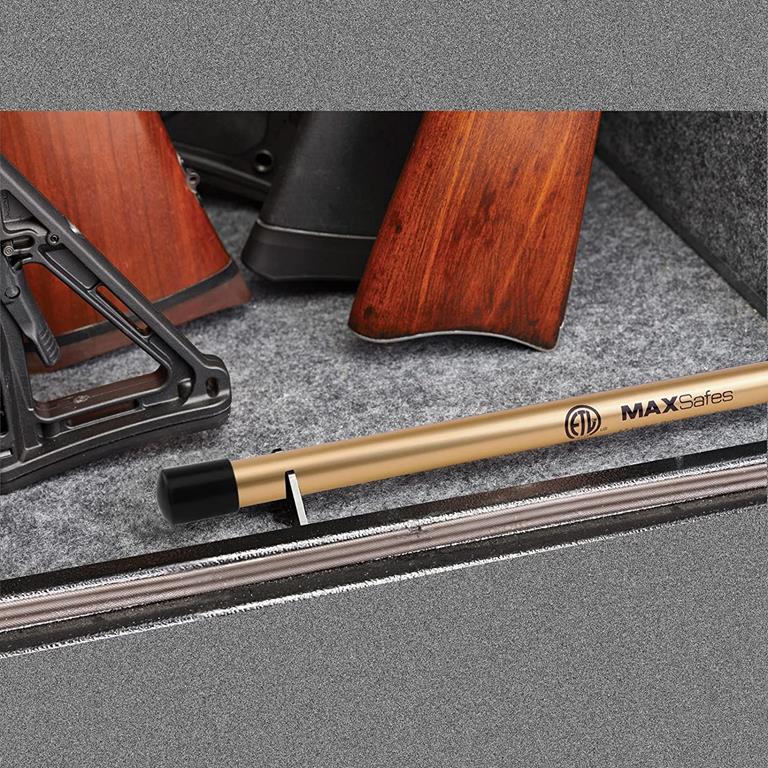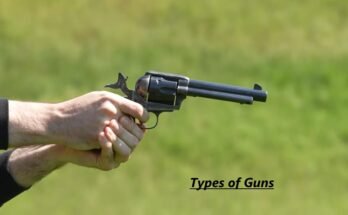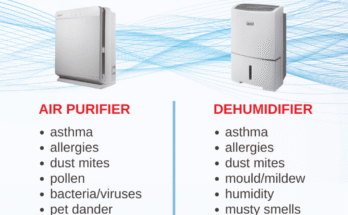Placing a dehumidifier inside your gun safe isn’t as simple as tossing it in and closing the door. Strategic placement is critical to ensure it effectively combats moisture, prevents rust, and protects your valuable firearms, optics, and documents. Put it in the wrong spot, and you might create “dead zones” where humidity silently destroys your gear. Understanding the science of air circulation, heat dynamics, and your specific dehumidifier type is key.
This guide dives deep into the optimal placement strategies for every type of gun safe dehumidifier, ensuring you get the maximum protection for your investment.
Why Placement Matters: The Science of Moisture Control in a Safe
Gun safes are sealed environments, but they aren’t perfect vacuums. Air inside is relatively stagnant. Moisture enters via humid air when you open the door, through microscopic leaks, or via moisture wicking from concrete floors. Crucially, temperature differences drive condensation:
-
Cool Walls, Warm Interior Air: The thick steel walls act as a heat sink. When the room temperature drops (e.g., at night, in a basement), the safe walls cool down faster than the air trapped inside. Warm, moist air hitting these cool walls condenses, depositing water directly onto your guns and the safe’s interior. This is the primary rust culprit.
-
Air Circulation is Limited: Unlike a room, there’s no natural breeze inside a closed safe. Moisture-laden air needs help moving towards the dehumidifier.
-
Heat Rises: Warm air naturally moves upwards. This principle is vital for effective dehumidifier rod placement.
-
Absorption Needs Contact: Desiccants can only absorb moisture from air that physically flows over or through them.
Placement Guide by Dehumidifier Type:
1. Dehumidifier Rods (e.g., GoldenRod, Plug-in Heaters): The Condensation Killer
-
Core Function: Gently warms the air inside the safe, keeping it slightly warmer than the walls. This prevents condensation and lowers relative humidity (RH%).
-
Optimal Placement:
-
Vertical Along the Back Wall: This is the GOLD STANDARD location. Mount the rod vertically (using its included clips or adhesive mounts) on the interior back wall of the safe.
-
Why Back & Vertical?
-
Heat Rises: Warming the air at the back bottom creates convection. Warm air rises up the back wall, displaces cooler air downwards near the front, creating a slow, continuous circulation loop throughout the entire safe interior.
-
Targets the Coldest Surface: The back wall is often closest to (or against) an exterior wall or has the most thermal mass. Warming the air near this coldest point is most effective at preventing condensation where it’s most likely to form.
-
Maximizes Circulation: Vertical placement maximizes the height for the warm air column to rise, driving better airflow.
-
Out of the Way: Keeps the rod safely away from direct contact with guns, scopes, or other items that could be damaged by heat (though rods operate at safe temps) or block airflow.
-
-
-
Alternative Placement (If Back Wall Impossible): Along a side wall, mounted vertically. Avoid the door (cables get pinched, less effective circulation).
-
Placement to AVOID:
-
Laying Horizontally on the Floor: Creates a small pocket of warm air only near the floor. Minimal circulation upwards. Ineffective for preventing condensation on walls and guns higher up.
-
Coiled Up: Severely reduces effective length and heat distribution.
-
Buried Under Guns or Gear: Blocks airflow and heat dispersion. Creates a fire hazard risk and renders the rod useless.
-
Touching Guns/Scopes Directly: While generally safe, prolonged direct contact on certain finishes or optics is not recommended.
-
-
Cable Management: Route the power cord neatly through the pre-drilled hole in the safe (use the provided grommet) or through the door hinge area if designed for it. Avoid kinks or sharp bends. For ultimate concealment, consider having an electrician wire an outlet directly inside the safe wall cavity.
2. Rechargeable Electric Desiccant Dehumidifiers (e.g., Eva-dry E-333/E-500): The Active Moisture Absorber
-
Core Function: Uses silica gel or similar material to actively pull water vapor out of the air. Requires periodic recharging.
-
Optimal Placement:
-
On a Middle or Upper Shelf, Near the Front: Place it on a shelf where air can freely flow around the unit. The front 1/3 of a shelf is often ideal.
-
Why Not Bottom? While moisture can be slightly denser near the bottom, placing it too low can restrict airflow if the bottom is crowded with guns or ammo cans. Middle/Upper placement leverages natural convection currents better.
-
Why Not Buried? ABSOLUTELY needs airflow. Placing it behind boxes, under clothes, or crammed in a corner drastically reduces its surface area exposure to humid air, making it far less effective.
-
Near Air Vents (If Applicable): Some safes have small passive air vents. Placing the desiccant near an intake vent (if identifiable) can help it process incoming moist air.
-
-
Placement to AVOID:
-
Directly on the Floor: Prone to being blocked, kicked, or submerged if minor water incursion occurs. Less effective airflow.
-
Pressed Against the Back Wall: Limits airflow to at least one side.
-
Inside Enclosed Containers (e.g., pistol boxes): Defeats the purpose! It needs to treat the safe’s air.
-
Where it Blocks Access or Gets Forgotten: You need to see the indicator light and remember to recharge it!
-
3. Silica Gel Canisters & Packs: The Passive Backup
-
Core Function: Absorb moisture slowly from the immediate surrounding air.
-
Optimal Placement:
-
Distributed Strategically: Place several smaller containers or packs in different locations to cover potential dead zones:
-
On the Floor: Especially if elevated off concrete, place one near the center or corners.
-
On Lower Shelves: Where cooler, denser air might pool.
-
Inside Pistol/Pouch Holders: To protect individual items.
-
Behind Long Guns: If guns are stored close to the back wall, place a canister behind them (if space allows).
-
Near Optics/Scopes: Provide localized protection for sensitive gear.
-
-
Use Breathable Containers: Ensure they are in mesh bags or containers with ventilation holes.
-
-
Placement to AVOID:
-
All Clumped Together: Spread them out for wider coverage.
-
Sealed in Plastic: They need air exposure.
-
Directly Blocked: Don’t bury them under items.
-
4. Vapor Corrosion Inhibitors (VCIs – e.g., Zerust, Hornady): The Molecular Shield
-
Core Function: Release protective vapors that form a shield on metal surfaces.
-
Optimal Placement:
-
Hanging from Shelves or Roof: Use the included hooks or adhesive to hang emitter bags/tabs from the underside of shelves or the ceiling (roof) of the safe interior. Vapors are heavier than air and will gently settle downwards.
-
Placed on Shelves Near Metal Items: Can also be placed directly on shelves, preferably near valuable firearms or optics.
-
Distributed: Use multiple emitters according to the safe’s cubic footage (follow manufacturer guidelines).
-
-
Placement to AVOID:
-
Sealed in Bags/Containers: They need open air to emit vapors.
-
Buried or Completely Covered: Vapors need space to disperse.
-

The Critical Companion: Hygrometer Placement
Knowing your humidity level is non-negotiable. A digital hygrometer tells you if your dehumidifier strategy (and placement!) is working.
-
Optimal Placement: Mount it on an interior side wall, roughly mid-height in the safe.
-
Why Mid-Height/Side Wall?
-
Avoids direct influence from the dehumidifier rod (usually on back wall) or a desiccant unit (on a shelf).
-
Provides a representative “average” reading of the safe’s main air volume.
-
Easier to read than on the floor or top shelf.
-
-
Placement to AVOID:
-
Directly next to the Dehumidifier Rod: Will read artificially low humidity due to localized warmth.
-
Inside a Pouch or Box: Won’t measure the ambient safe air.
-
Blocked from View: You need to see it easily!
-
Optimal Handgun Safe Interior Layout for Humidity and Corrosion Control
[ SAFE ROOF ]| || VCI | <— Hanging VCI Emitters (anti-rust vapor corrosion inhibitors)
|_____|
[ SHELF ] —————————————————————
| | [Desiccant] <— Rechargeable unit placed at front or middle
| | [Hygrometer] <— Mounted on inner side wall (mid-height)
|GUNS | <— Firearms placed neatly upright or on rests
| |
|_____|
| |
| | [Silica Gel] <— Canisters placed on floor or in back corners
|_____|
/ \
[ BACK WALL ] [ DOOR ]||||||||| <— Dehumidifier Rod (vertical, full-height mount)
Key Components Explained:
-
VCI Emitters: Hang from the top to protect metal surfaces from rust.
-
Desiccant Unit: Rechargeable moisture absorber placed where air circulates—ideally front or middle of the shelf.
-
Hygrometer: Lets you monitor internal humidity at a glance—best mounted mid-height on a side wall.
-
Silica Gel Canisters: Passive moisture absorbers, great in corners or the floor to reduce dampness.
-
Dehumidifier Rod: A low-wattage heating rod mounted vertically to keep the interior air dry and circulating.
This layout maximizes protection for your firearms, helping prevent rust and damage, especially in humid environments like basements or coastal regions.
Pro Tips for Maximum Effectiveness:
-
Combine Methods: Use a Dehumidifier Rod (back wall) PLUS a Rechargeable Desiccant (middle shelf) PLUS Silica Gel (distributed) PLUS VCIs (hanging). This layered approach tackles moisture from all angles.
-
Ensure Airflow: Don’t overcrowd the safe. Allow space for air to circulate around rods, desiccants, and your guns. Avoid stuffing items tightly against walls.
-
Regular Maintenance: Recharge desiccants before the indicator says full. Check silica gel for saturation (color change). Replace VCI emitters per schedule. Vacuum dust occasionally.
-
Monitor Religiously: Check your hygrometer weekly. Target 40-50% RH.
-
Elevate the Entire Safe: Get it off bare concrete using a pallet, rubber mat, or plastic barrier to prevent moisture wicking from below.
Conclusion: Placement is Power in the Fight Against Rust
Simply having a dehumidifier isn’t enough. Strategic placement transforms it from a passive device into an active defender of your firearms. By understanding the type of dehumidifier you have and placing it according to its function and the principles of air circulation and heat dynamics, you create an environment where condensation is defeated and humidity is kept at bay.
Remember the core rules:
-
Rods go VERTICAL on the BACK WALL.
-
Rechargeable Desiccants go on SHELVES with AIRFLOW.
-
Silica Gel is DISTRIBUTED.
-
VCIs are HANGING or PLACED near metal.
-
Hygrometers go MID-HEIGHT on a SIDE WALL.
Invest the time to position your moisture defenses correctly. Your guns – free from the destructive touch of rust – will thank you for decades to come.



